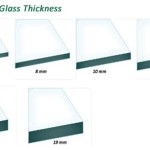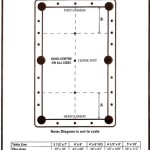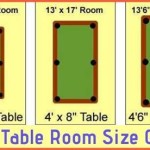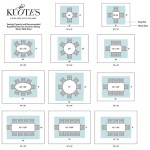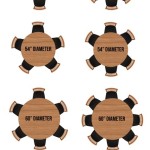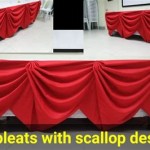Zinc Table Top Care: Maintaining Beauty and Longevity
Zinc tabletops are increasingly popular for their unique aesthetic, combining an industrial edge with a touch of rustic elegance. They’re often found in kitchens, restaurants, and outdoor settings. The inherent properties of zinc – its malleability, corrosion resistance, and distinctive patina development – contribute to its appeal. However, proper care is essential to maintain the beauty and longevity of a zinc tabletop. This article provides a comprehensive guide to zinc tabletop care, outlining best practices for cleaning, maintenance, and stain prevention.
Unlike materials such as granite or stainless steel, zinc is a "living" metal, meaning it reacts to its environment and develops a patina over time. This patina, a natural oxidation process, is a key characteristic that many find desirable. It provides a protective layer and contributes to the metal's unique character. Understanding this characteristic is crucial to properly care for it because certain cleaning methods and products could damage the patina or alter its appearance in undesirable ways.
Understanding the Nature of Zinc Patina
The patina on a zinc tabletop is not a uniform coating but rather a dynamic process of oxidation and corrosion. The initial patina is typically a bright, shiny silver color. Over time, as the zinc reacts with air and moisture, it will slowly darken and develop a more mottled, textured surface. The rate and appearance of the patina will vary depending on factors such as humidity, exposure to sunlight, and contact with acids or other substances. This is a natural process and should be considered part of the zinc's charm.
The patina provides zinc with a level of protection against further corrosion. The layer formed acts as a barrier, slowing the rate at which the underlying metal reacts to the atmosphere. However, it's also important to note that while the patina offers protection, it's not impervious to damage. Scratches, harsh chemicals, and prolonged exposure to certain substances can still affect the underlying metal.
It is crucial to understand that attempts to completely prevent or reverse the patina process are generally not recommended. The patina is an integral part of zinc's character and trying to eliminate it can lead to damage or an unnatural, inconsistent appearance. Instead, care should focus on managing the patina's even development and preventing damage that could detract from its aesthetic.
Regular Cleaning and Maintenance
Regular cleaning is paramount to prevent the buildup of grime, food residue, and other contaminants that can stain or damage the zinc surface. The frequency of cleaning will depend on the table's usage. Tabletops in high-traffic areas, such as restaurants, will require more frequent cleaning than those in residential settings with lighter use.
For routine cleaning, a soft cloth dampened with warm water is typically sufficient. Avoid using abrasive scrubbers, steel wool, or harsh cleaning products, as these can scratch the surface and damage the patina. A mild dish soap can be added to the water for more thorough cleaning, but it's crucial to rinse the surface thoroughly with clean water to remove any soap residue.
After cleaning, thoroughly dry the zinc tabletop with a clean, soft cloth. This is important to prevent water spots and minimize the risk of corrosion. Leaving water to sit on the surface can lead to the formation of unwanted marks and can accelerate the patina process unevenly.
Avoid using cleaning products that contain ammonia, bleach, or other harsh chemicals. These substances can react with the zinc and cause discoloration or etching. It is always recommended to test any new cleaning product on an inconspicuous area of the tabletop first to ensure that it does not cause any adverse effects.
For removing stubborn stains, such as food spills or grease, a paste made of baking soda and water can be applied gently with a soft cloth. Allow the paste to sit on the stain for a few minutes, then rinse thoroughly with clean water and dry with a soft cloth. Avoid excessive rubbing, as this can scratch the surface.
Waxing the zinc tabletop can provide an additional layer of protection and enhance its appearance. A high-quality, non-abrasive furniture wax can be applied sparingly with a soft cloth, following the manufacturer's instructions. Waxing can help to repel water, prevent stains, and deepen the patina's luster. However, it's important to note that waxing can also alter the patina's appearance and may require periodic re-application. It is recommended to thoroughly research the waxes available and choose one that is specifically designed for metal surfaces.
Preventing Stains and Damage
Preventing stains and damage is crucial to maintaining the beauty and longevity of a zinc tabletop. This involves taking proactive measures to protect the surface from contact with potentially damaging substances.
Acidic substances, such as lemon juice, vinegar, and wine, can react with the zinc and cause stains or etching. Immediately wipe up any spills of these substances with a damp cloth and dry the surface thoroughly. Consider using placemats or coasters to protect the tabletop from spills and condensation.
Hot items, such as pots and pans, should never be placed directly on the zinc tabletop. The heat can damage the surface and cause discoloration. Always use trivets or heat-resistant pads to protect the surface from heat damage.
Sharp objects, such as knives or metal utensils, can scratch the zinc surface. Use cutting boards or placemats to protect the tabletop from scratches. Be mindful of the placement of sharp objects and avoid dragging them across the surface.
Prolonged exposure to moisture can also contribute to corrosion and staining. Ensure adequate ventilation in the area surrounding the tabletop and avoid leaving wet cloths or spills on the surface for extended periods. Regularly inspect the tabletop for any signs of moisture damage and address any issues promptly.
In outdoor settings, zinc tabletops are exposed to a wider range of environmental factors, including sunlight, rain, and temperature fluctuations. Consider using a protective cover when the table is not in use to shield it from the elements. Regular cleaning and maintenance are particularly important for outdoor zinc tabletops to prevent the buildup of dirt, debris, and other contaminants.
Sometimes, unavoidable scratches and marks will occur. Small scratches will blend into the patina over time with little intervention. Applying a small amount of mineral oil and gently buffing the area may help minor scratches blend more quickly. For more severe damage, consulting a professional metalworker may be necessary.
Ultimately, the care of a zinc tabletop is a delicate balance between preserving its natural beauty and protecting it from damage. Understanding the material's properties and embracing its evolving patina are key to enjoying its unique character for years to come. By following these guidelines for cleaning, maintenance, and stain prevention, one can ensure that a zinc tabletop remains a stunning and functional centerpiece of any space.
How To Care For Your Zinc Table Top
How To Care For Your Zinc Table Top

Diy Zinc Top Kitchen Table Beneath My Heart

Zinc Countertops Pros And Cons Countertop Cost

Diy Zinc Top Table House Of Hawthornes

Stone Furniture Care Marble Granite Quartz Terrazzo

Types Of Table Tops A Buyer S Guide Grain Frame

Care And Cleaning Mio Metals

How To Clean Zinc 11 Steps With S Wikihow

How To Clean Zinc 11 Steps With S Wikihow


